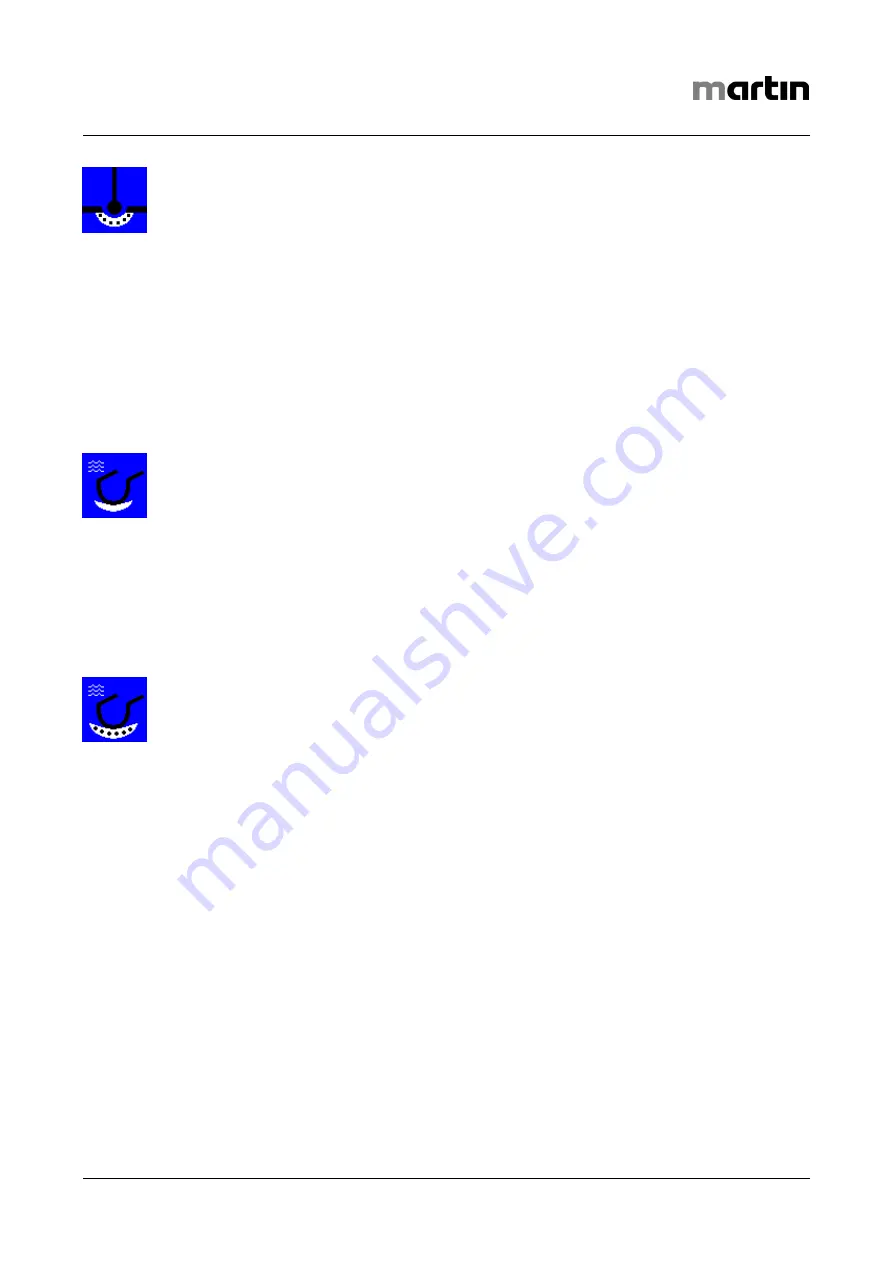
Martin maxium & maxium Beamer Operating Instructions
V 2.0
47
Forced Coag
Forced coagulation current that allows faster coagulation than the “Contact Coag” current, but the
application technique is identical in both cases. If the application instrument or electrode is brought
only slightly in contact with the tissue, some spark formation can be observed between the tissue
and the electrode. This is a normal and intended effect that leads to strong tissue desiccation at
the point of contact and, as a result, slight carbonization of the tissue. Due to the accelerated car-
bonization process, however, the depth effect is rather limited. Basically, the following rules apply:
Low penetration depth – short application time at a correspondingly high power setting;
High penetration depth – long application time at a correspondingly low power setting.
Uro Coag
Specialized coagulation current for use in liquid media in conjunction with loop-type resectoscopes.
The HF energy is transferred to the tissue either on a “non-contact” basis or with the electrode
slightly touching the tissue. Here, unlike the technique that uses an irrigation liquid (e.g. a manni-
tol/sorbitol solution), the current is automatically conducted to the source of the hemorrhage be-
cause blood has a higher electric conductivity. The special nature of this current prevents the loop
electrode from “sinking” into the tissue.
Forced Uro Coag
This is a special coagulation current for TUR applications. Compared with the “Uro Coag" current,
the loop-type electrode is even less prone to sink into the tissue during the coagulation process.
However, this current also makes higher demands on the insulation of the resectoscope and pro-
duces slightly more irrigation liquid “bubbling” than the “Uro Coag” current when applying the elec-
tric energy to the tissue.
















































